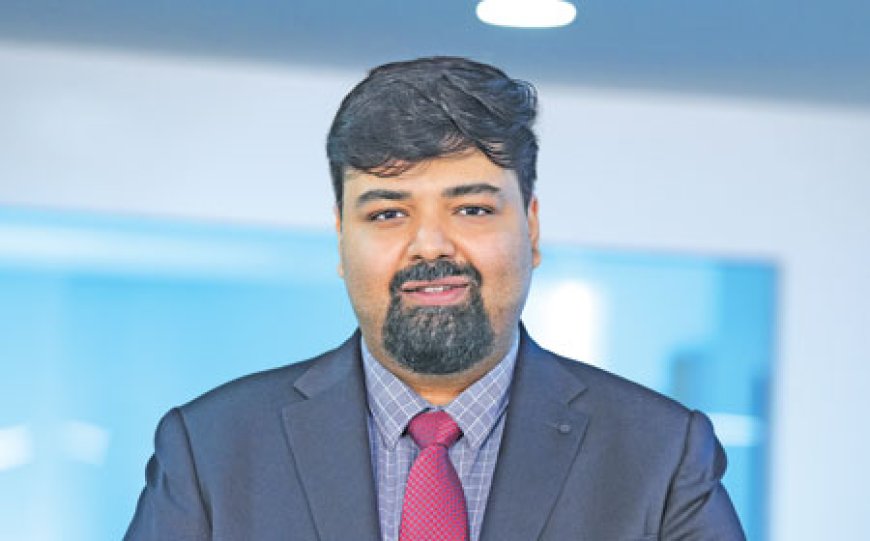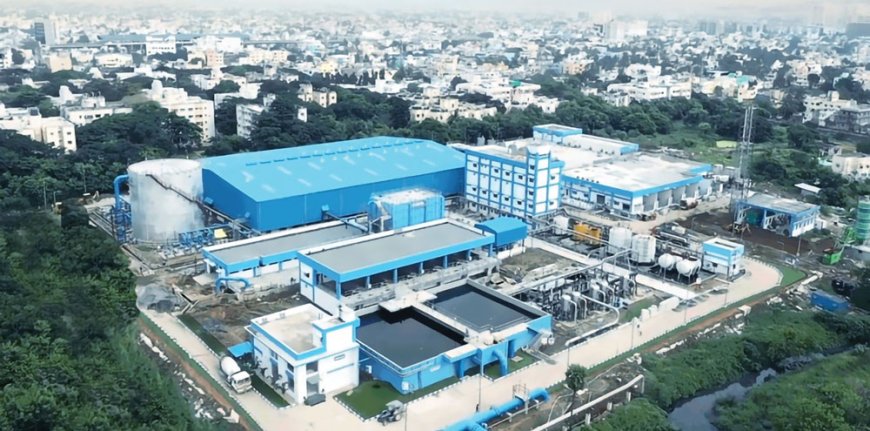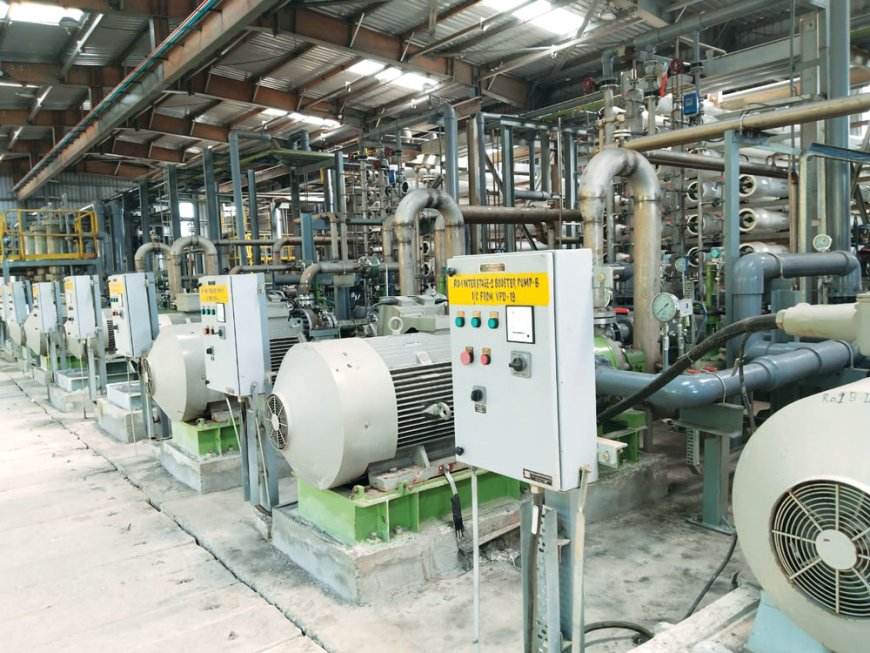The future of water infrastructure in India will depend on a combination of factors.

Rohan Mittal
Leadership Team, VA Tech Wabag
What is your overview on water and wastewater management in India?
Today, India has almost 18% of the world’s population, but only 4% of its water resources, making it among the most water-stressed in the world. With rapid urbanization, industrialization, and population growth, the demand for water is escalating, while the availability of clean water resources is depleting. Additionally, the need for wastewater treatment infrastructure is very inadequate given the population growth and industrialization.
Over the last few years, Indian Government has been ambitiously investing and promoting the water sector, with a vision to make the country water secure by 2030. In the recent years, there have been a significant growth in this sector, with the continuous efforts by both the government and private sectors to address these challenges through policy interventions, stringent norms, technological advancements, and community participation and huge allocations for the sector through NMCG, AMRUT, Jal Jeevan Mission etc. India is steering towards achieving the SDG 6 by taking several Initiatives; which has shown active progress in the country so far. JJM is perhaps the world’s largest programme to achieve the SDG 6 targets ahead of time with speed and scale.
Going forward, water and wastewater management as a sector will see more growth. The substantial gap between supply and demand, combined with India's aspirations for sustainable growth, will drive increased attention and investment in this sector. By prioritizing innovative solutions, private sector participation and by fostering collaboration, India aims to achieve transformative progress towards water security and sustainable development.

What are the emerging trends in wastewater management? Which are your key projects?
The concept of resource recovery, focusing on the recycle and reuse of treated wastewater, have been gaining a lot of importance in India. National Framework on Recycle & Reuse - SRTW policy aimed at reducing the pressure on scarce freshwater resources and promoting the use of treated wastewater have been instrumental. This contributes to the Government’s commitment to environmental sustainability and achievement of SDG 6.3 on improving water quality through increased recycling and safe reuse. Government regulations are also driving industries towards recycling and reusing of water, thereby conserving the groundwater and other fresh water sources. Many industries are now turning to alternative sources such as recycled water and Zero Liquid Discharge (ZLD) systems to minimize water discharge.
WABAG’s contributions in this regard have been significant. In 2001, we have set up the first-ever direct potable reuse plant in Windhoek, a 21 MLD plant which has been serving the entire city as the only source. In India, our 45 MLD Koyambedu plant is one of the largest TTRO plant in India, where secondary treated water from STPs undergoes further treatment to meet drinking water standards, the treated water is then supplied to various industries in and around Chennai, followed by our recently delivered ZLD plant for NMDC, etc. Currently, we are engaged in the execution of a similar plant for Ghaziabad, a 40 MLD TTRO system designed for industrial use.
As there is a lot of focus on sustainability initiatives, what are the major things happening in water sector?
Sustainable initiatives in the water sector are gaining momentum, given the government’s focus on integrated water resource management, rainwater harvesting, groundwater recharge, watershed management, and ecosystem restoration. These initiatives aim to ensure the sustainable use of water resources, minimize water pollution, and enhance resilience to climate change impacts.
Some of the major initiatives in the country include Government’s flagship program, the Swachh Bharat Mission (SBM) (Clean India Campaign), led by the Prime Minister himself has made rapid progress in ending open defecation across the country, which significantly impacts improving water, sanitation and hygiene (WASH), Namami Gange (NMCG) for River Rejuvenation, Catch the Rain - Where it Falls, When it Falls for rainwater harvesting and water conservation, Arth Ganga to focus on economic activities related to Ganga, National River Conservation Plan (NRCP) to improve the water quality of the rivers, which are the major water sources in the country, through the implementation of pollution abatement works and Atal Bhujal Yojana for facilitating sustainable ground water management etc.
Additionally, there is increasing recognition of the importance of incorporating nature-based solutions and circular economy principles into water management practices to achieve long-term sustainability goals.

What are your contributions towards becoming water positive?
Being a pure-play water technology multinational, we have been playing a vital role in facilitating the journey towards water positivity through our solutions and services. Each of the 6,500+ plants built by WABAG over the last 100 years has played a role in this endeavour. The WABAG built plants are:
- Producing 27.5 million m3 of clean water daily, meeting the demands of millions worldwide
- Treating 27 million m3 of wastewater daily, promoting a clean and healthy environment
- Desalinating 1.3 million m3 of seawater daily to supplement freshwater sources
- Treating 2 million m3 of industrial effluent daily, safeguarding water bodies
- Recycling 2.7 million m3 of water daily for industrial and non-potable reuse
Moving forward, WABAG remains committed to supporting industries and utilities across the country and globally in their efforts to achieve water neutrality and water positivity. We will continue to provide cost-effective advanced technology solutions tailored to diverse applications, contributing to a sustainable water future.
How do you look at the future of water infrastructure in the country? What is your vision on water security and the way forward?
The future of water infrastructure in India will depend on a combination of factors, including population growth, urbanization trends, climate change impacts, technological innovations, and policy interventions.
Significant investments are pouring into the sector, driven by a growing demand for desalination and reuse globally, as these are being recognized as the most viable alternative sources for both domestic and industrial consumption. In India, Government initiatives like NMCG 2.0, AMRUT 2.0 and policies promoting the use of recycled water by industries shall continue to drive opportunities.
As mentioned earlier, we have been a pure play water technology company and we will continue to be one while continuously contributing to this sector with advanced solutions leveraging our strong credentials and expertise in this sector. Going forward our endeavour would be executing more desalination and water reuse projects to leverage the potential of drought-proof resources like wastewater and seawater which are reliable, affordable, viable and sustainable water source of water. We anticipate that this trend will continue for few decades to come and as mentioned, there is a huge potential in the sector, we are strategically positioned to capitalize on these opportunities.







